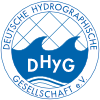Improved positioning of surveying vessels on inland waterways with HydrOs
Surveying vessels are equipped with GNSS receivers or GNSS-INS coupled systems respectively to determine their position. By receiving and processing a correction signal, which is provided by a network of continuously operating reference stations, they determine a precise GNSS real-time kinematic (GNSS-RTK) solution. Thereby, the multibeam echo sounder observations can be georeferenced in order to produce a map of the channel bottom. One crucial point of the entire workflow is the quality of the vessel position which is highly influenced by the surrounding topography. For instance, bridges or buildings can cause multipath effects, refraction or a complete loss of signal reception. Often, even the correction signals cannot be received. Then, no RTK solution can be determined. To mitigate such gaps in the GNSS-RTK trajectory, an adjustable multi-sensor system called Integrated Hydrographic Positioning System (HydrOs) was developed as a joint project of the German Federal Institute of Hydrology (Bundesanstalt für Gewässerkunde) and the Institute of Engineering Geodesy at the University of Stuttgart.
GNSS | positioning | Extended Kalman Filter | hydrographic multi-sensor system | outlier testing


